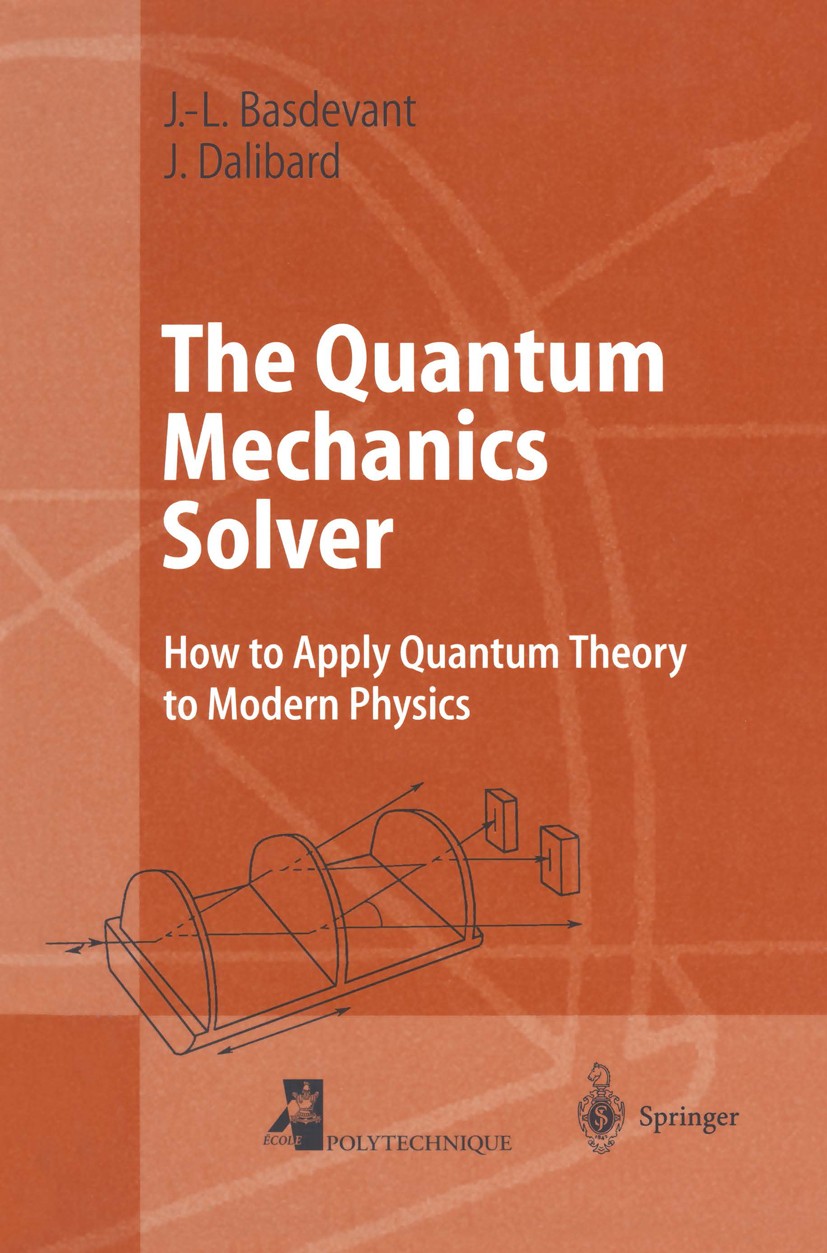| 书目名称 | The Quantum Mechanics Solver |
| 副标题 | How to Apply Quantum |
| 编辑 | Jean-Louis Basdevant,Jean Dalibard |
| 视频video | http://file.papertrans.cn/919/918098/918098.mp4 |
| 概述 | Problems from modern physics to help the student apply just-learnt theory to fields such as molecular physics, condensed matter physics or laser physics.Includes supplementary material: |
| 丛书名称 | Advanced Texts in Physics |
| 图书封面 |  |
| 描述 | Quantum mechanics is an endless source of new questions and fascinating observations. Examples can be found in fundamental physics and in applied physics, in mathematical questions as well as in the currently popular debates on the interpretation of quantum mechanics and its philosophical implica tions. Teaching quantum mechanics relies mostly on theoretical courses, which are illustrated by simple exercises often of a mathematical character. Reduc ing quantum physics to this type of problem is somewhat frustrating since very few, if any, experimental quantities are available to compare the results with. For a long time, however, from the 1950s to the 1970s, the only alterna tive to these basic exercises seemed to be restricted to questions originating from atomic and nuclear physics, which were transformed into exactly soluble problems and related to known higher transcendental functions. In the past ten or twenty years, things have changed radically. The devel opment of high technologies is a good example. The one-dimensional square well potential used to be a rather academic exercise for beginners. The emer gence of quantum dots and quantum wells in semiconductor technolog |
| 出版日期 | Textbook 20001st edition |
| 关键词 | Lösungen; Problems; Quantenmechanik; Solutions; diatomic molecule; hydrogen atom; interferometry; kommentie |
| 版次 | 1 |
| doi | https://doi.org/10.1007/978-3-662-04277-9 |
| isbn_ebook | 978-3-662-04277-9Series ISSN 1439-2674 |
| issn_series | 1439-2674 |
| copyright | Springer-Verlag Berlin Heidelberg 2000 |
 |Archiver|手机版|小黑屋|
派博传思国际
( 京公网安备110108008328)
GMT+8, 2025-12-29 07:48
|Archiver|手机版|小黑屋|
派博传思国际
( 京公网安备110108008328)
GMT+8, 2025-12-29 07:48


